

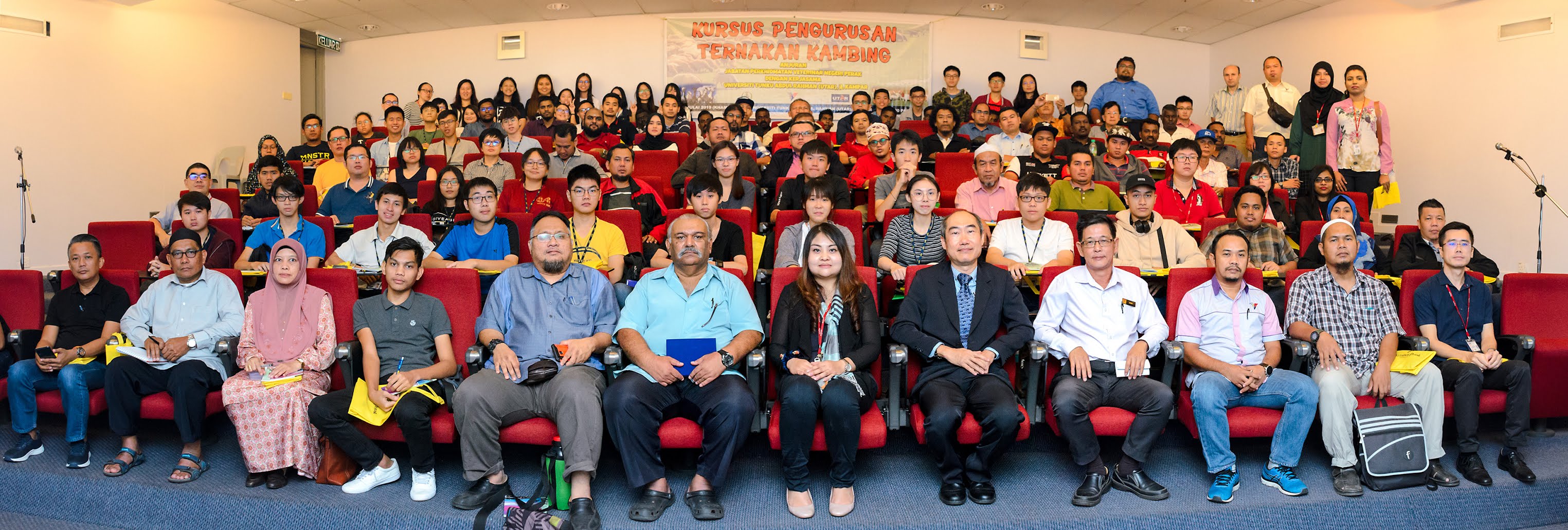
Front row, third from right: Mohd Nizam, Liew, Dr Lim and Dr Kwong with participants
With the aim to educate participants on good goat husbandry practices, the course on “Goat Husbandry Practices (Level 1)” was co-organised by Department of Veterinary Services Perak and Centre for Biodiversity Research of Faculty of Science (FSc) on 18 July 2019 at UTAR Kampar Campus.
Present at the course were FSc Dean Assoc Prof Dr Lim Tuck Meng, Ketua Pegawai Veterinar Daerah Kampar dan Kinta Liew Chun Sen, Organising Chairperson Dr Kwong Phek Jin, and esteemed speakers Ketua Unit Rusa Ladang Inforternak Sungai Siput Mohd Nizam bin Tahar and Pegawai Veterinar Bahagian Pembangunan Industri Ternakan Dr Norsuhanna binti Mohd Mokhtar. Over 100 participants attended the course. The crowd consisted of experienced farmers, beginners of goat farming, and Year One Bachelor of Science (Hons) Agricultural Science students.
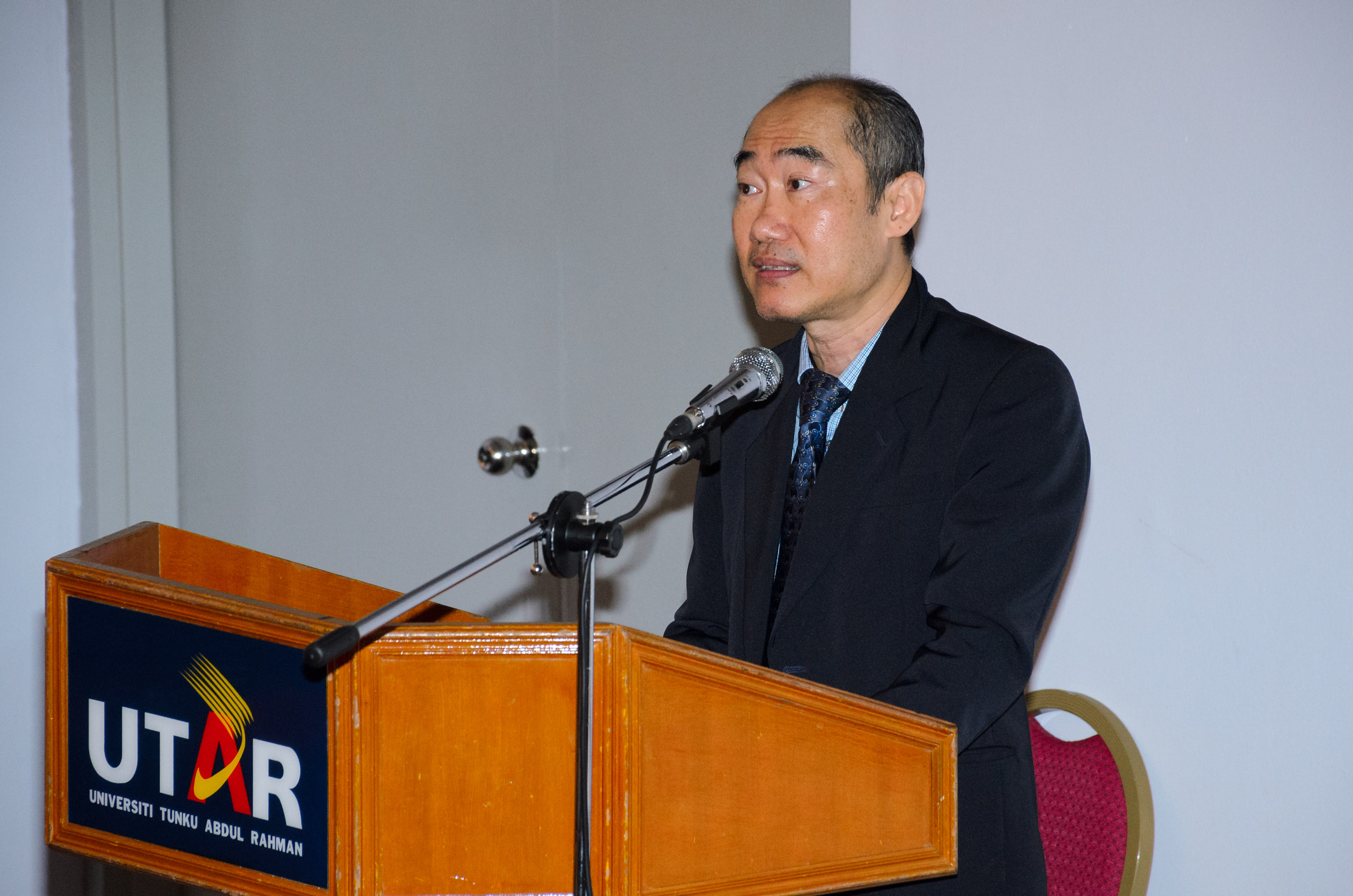
Dr Lim delivering his speech
Dr Lim, in his speech, expressed his thanks to the Department of Veterinary Services Perak for the opportunity to co-organise this event. “Since the inception of the Agricultural and Food Science Programme, we have continuously promoted and fostered research collaboration, offered advice and contributed to society. Today’s event is also one of the many beneficial platforms that we utilised to learn from one another while encouraging lifelong learning,” said Dr Lim.
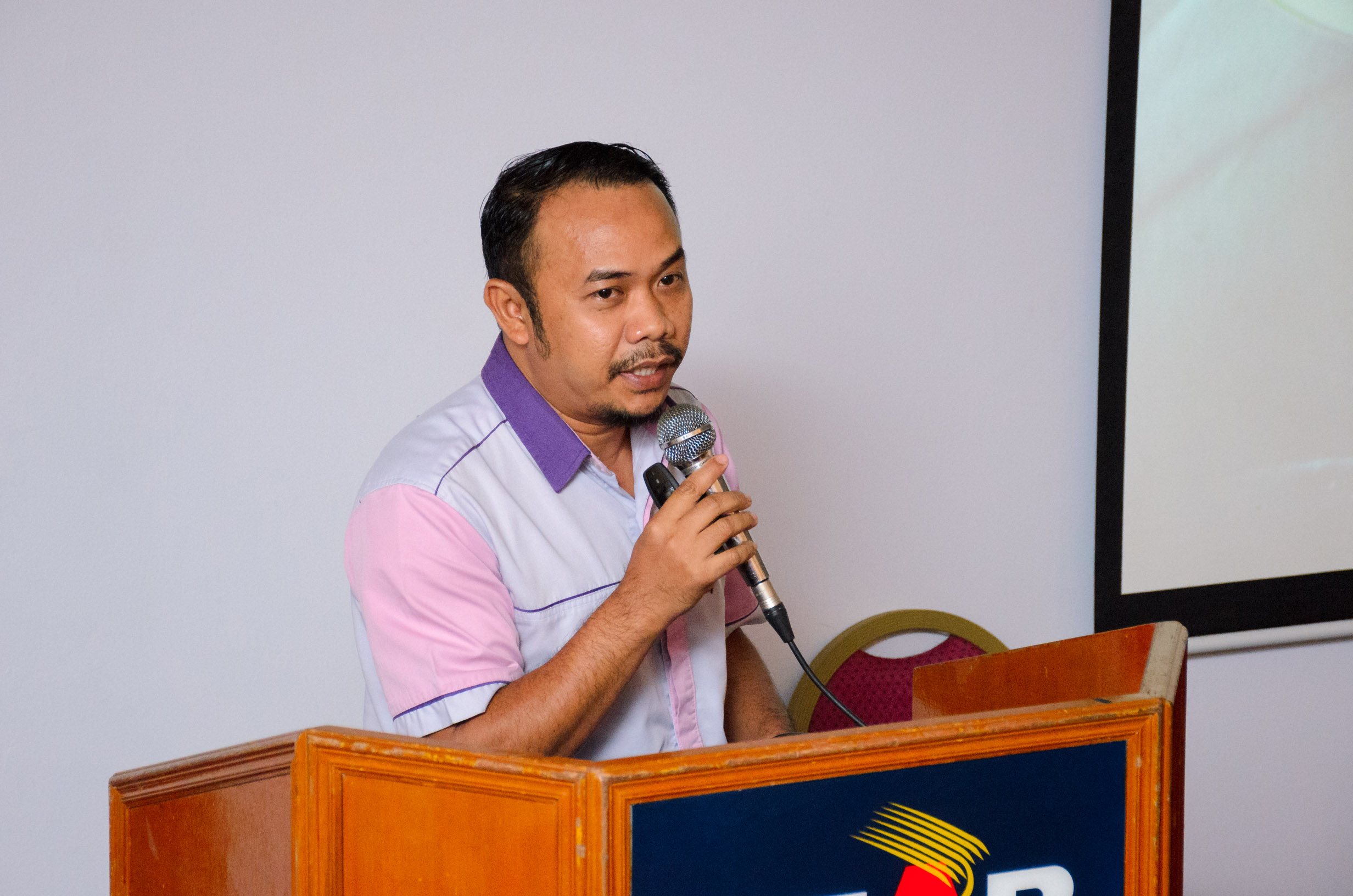
Mohd Nizam listing the common purposes of goat farming
The first speaker Mohd Nizam shed light on “Goat Farming Management”. He emphasised the importance for participants to identify the purpose of their goat farming. He explained that a portion of people rears goats to provide food needs to consumers through its meat and milk. Others rear goats to be sold to other farmers and consumers, as well as for breeding purposes. He also mentioned that there are individuals who rear goats as a hobby and they are known as hobby farmers. Hobby farmer, as described by the speaker, is someone who rears goats as a form of investment, whereby they can opt to sell their goats when they are in need of extra finances.
Further into the talk, he listed the four management systems in goat farming. The first system is tethering (bertambat). It is a system where the goats are tied around their pen or environs of their pen in the daytime and are kept in their pens of sheds in the night time. One of the common ways of tethering the goats is by tying them to one peg. The pegs will be shifted a few times in a day to a different location to offer goats fresh grazing. This system is feasible for small herd ranging from two to ten goats.
The second system, as explained by Mohd Nizam, is the extensive system whereby the goats are allowed to freely browse and graze the land. Little management is required in this system except allowing the goats to graze during the day and kept in their pens at night. These goats will freely roam about looking for food and water themselves and they can feed on crop residues as well. However, this system has its downside. He explained that farmers using this system will have difficulty in managing the goats and that the goats will lack food nutrients. He also mentioned that the free-roaming goats may cause problems to homeowners or other farmers, as these goats will feed on their plantations.
The speaker recommended the third system, which is the semi-intensive system as the most suitable approach to goat farming in Malaysia. In this system, the goats are allowed to graze at a certain time during the day, in the company of a herdsman, and are confined in their pens at night. The system also ensures that the goats receive supplements in their diet to overcome dietary deficiencies from the additional (if necessary) stall feeding.
The final system is the intensive system. He explained that farmers using this system confine the goats to their sheds and the goats are fed in the shed. The bucks are also separated from the does to avoid uncontrolled mating, while the kids are kept in another shed. The goats are also fed with grasses and crop residues, which is aimed to fatten the goats.
In preparing for goat farming, Mohd Nizam highlighted a number of important aspects for participants to consider. Before an area can be converted into a goat farm, the speaker highlighted that farmers must carefully consider the layout of the farm; dimensions of the shed or pen to ensure that the goats are comfortable and not overcrowded; management of manpower; and food and medicinal supplies.
Upon receiving the livestock at the farm, the speaker advised that farmers must inspect the goats to check for any open wounds and to identify symptoms of illnesses. If the mentioned conditions are present, he advised that farmers must isolate and treat the unhealthy goats first. Anti-stress medicine that is mixed into the drinking water is also given to the new herd. Other cautionary steps taken by farmers in caring for the new herd include separating them from the existing herd; keeping the new herd in the shed for at least two weeks, also known as the quarantine period; constantly monitoring the health condition of the new herd; and ensuring that new herd is calm and not disturbed. During the quarantine period, the goats are given anti-stress medicine consecutively for 10 days and are fed greeneries for four consecutive days while new food is slowly incorporated into their diet. He further elucidated that the health programme a farmer conducts starts 14 days after the arrival of the new herd. Under the health programme, samples from ill goats are taken for laboratory testing to determine the cause and farmers are advised to have post-mortem done on deceased goats to identify the cause of death. Towards the end of the talk, he also advised participants to ensure the cleanliness of the farm and shed for the benefit of the goats and herders.
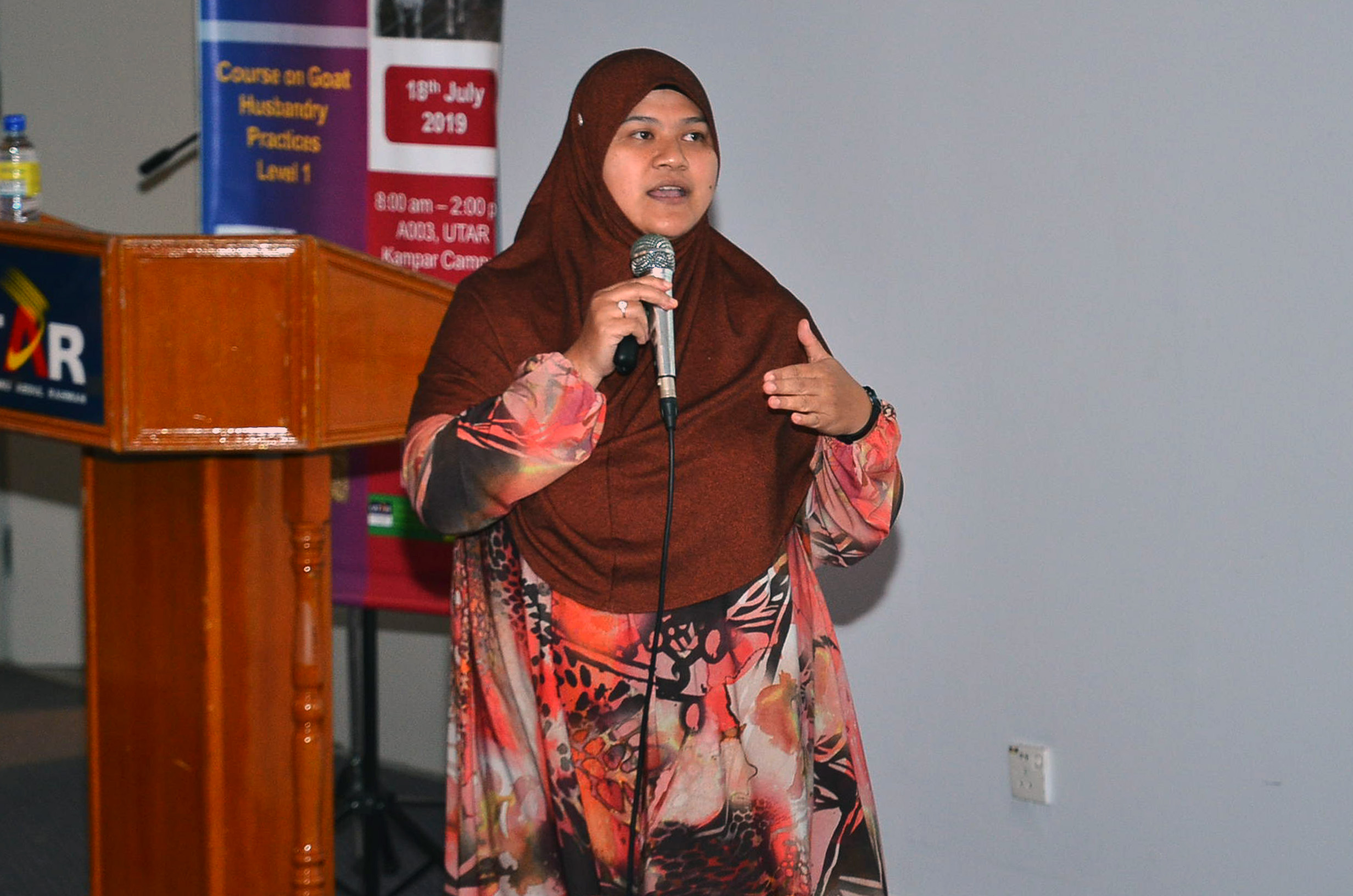
Dr Norsuhanna emphasising the importance to take preventive measures
The second session saw speaker Dr Norsuhanna speaking on “Management and Prevention of Goat’s Diseases”. Prior to the explanation of the various types of diseases that were commonly reported, she highlighted the importance of managing and preventing goat’s diseases. The importance included preventing further loss to the herders, preventing the spread of certain diseases to humans, preventing the lack of border control between states and preventing the sudden rise of prices. She stated that diseases found in sick goats were usually contracted via a virus, bacteria, parasite, metabolically, and mismanagement. Some diseases were known to spread from touch, airborne, vector, and from the farm tools used. The risk of transmission is higher through the mating process, relocation of goats and birthing. The basic steps for herders to take precautionary prevention of diseases taught by the speaker were ensuring the cleanliness of the farm, limiting mobility in and out of the farm and applying good disposal practices.
Among the common diseases that Dr Norsuhanna mentioned were pneumonia, contagious ecthyma, diarrhoea, foot rot, ruminal tympany, infected wounds and worm infection. For each disease, she explained the causes and treatments. Due to the limited amount of time, she advised participants to study further about the diseases she spoke from the guidebook provided.
When asked of the motivation to organise this course, Dr Kwong said, “Malaysia’s self-sufficiency level for goat production is only 11%. Most of the chevon consumed in Malaysia relied on importation. Thus, there is potential for this industry to improve. Furthermore, among the red meat, chevon has lower cholesterol and the milk is easier to digest with higher calcium and mineral content. Therefore, we hope that the knowledge received from this course will help those who would like to venture into goat farming and also encourage the younger generation to involve in this livestock farming business for the national food security purposes.”
She added, “This course introduced students, researchers, livestock industry players and the public to the proper goat husbandry practices guideline set by the Department of Veterinary Services, Malaysia. It was also an educational platform for students and the public to learn the importance of engaging a proper livestock farming approach while keeping in mind of the food security goal; at the same time reducing the impact towards the environment. It was also a platform for intellectual exchange amongst the academic institutions, livestock industry players and the government agency on the issue and challenges faced by the livestock industry in Malaysia.”
The course came to an end with a closing speech from Liew. He expressed his thanks to UTAR for co-organising this event. He mentioned that event such as this was important to educate herders and the public about goat husbandry practices. “Apart from learning about good goat husbandry practices, in a world that is becoming more digital and with more technological advances, this event is also a good platform for you to learn about the latest technology used in livestock farming. It may not be widely used but in time, these technologies will assist farmers and improve farm management,” said Liew.
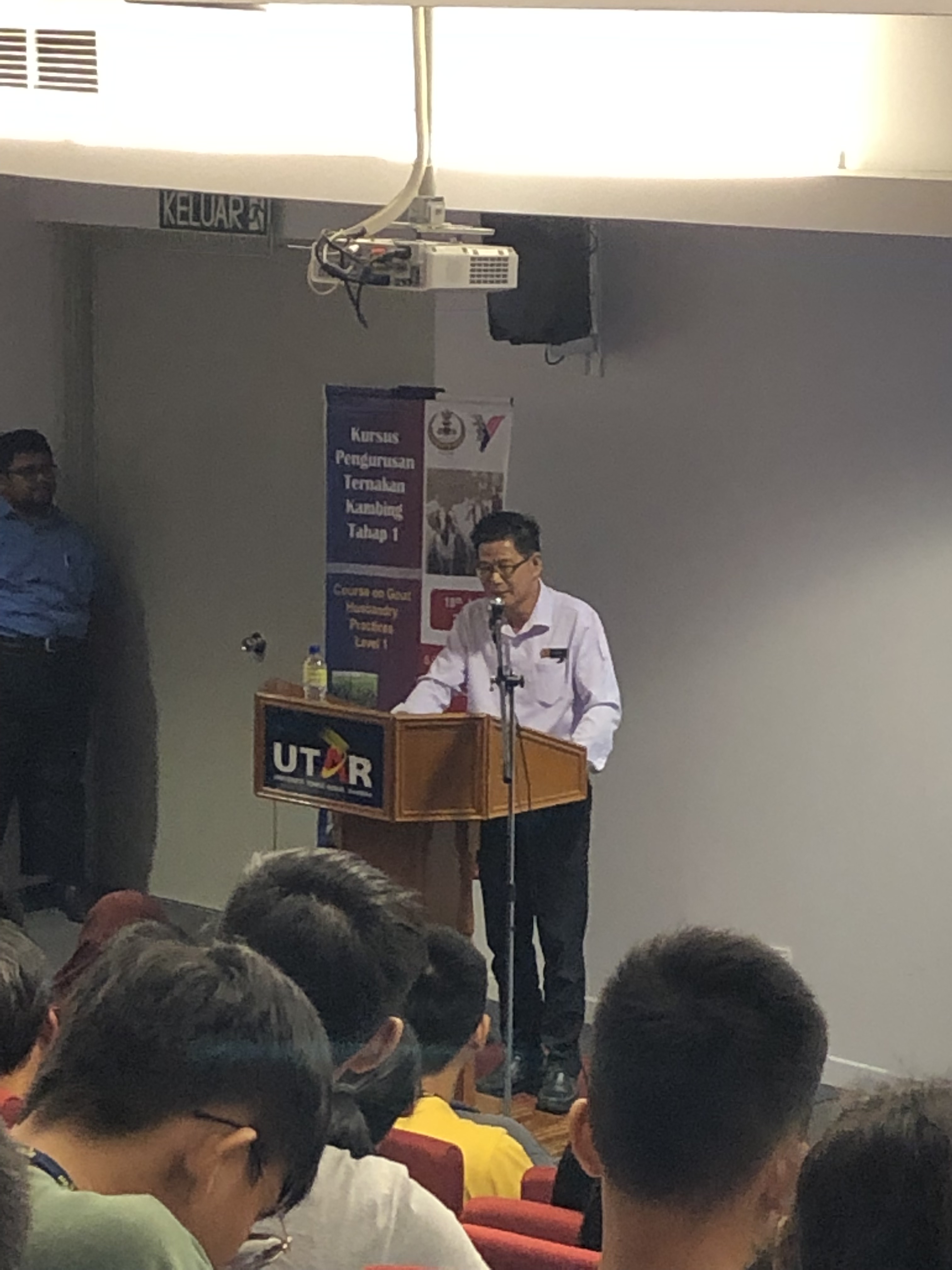
Liew delivering his closing speech
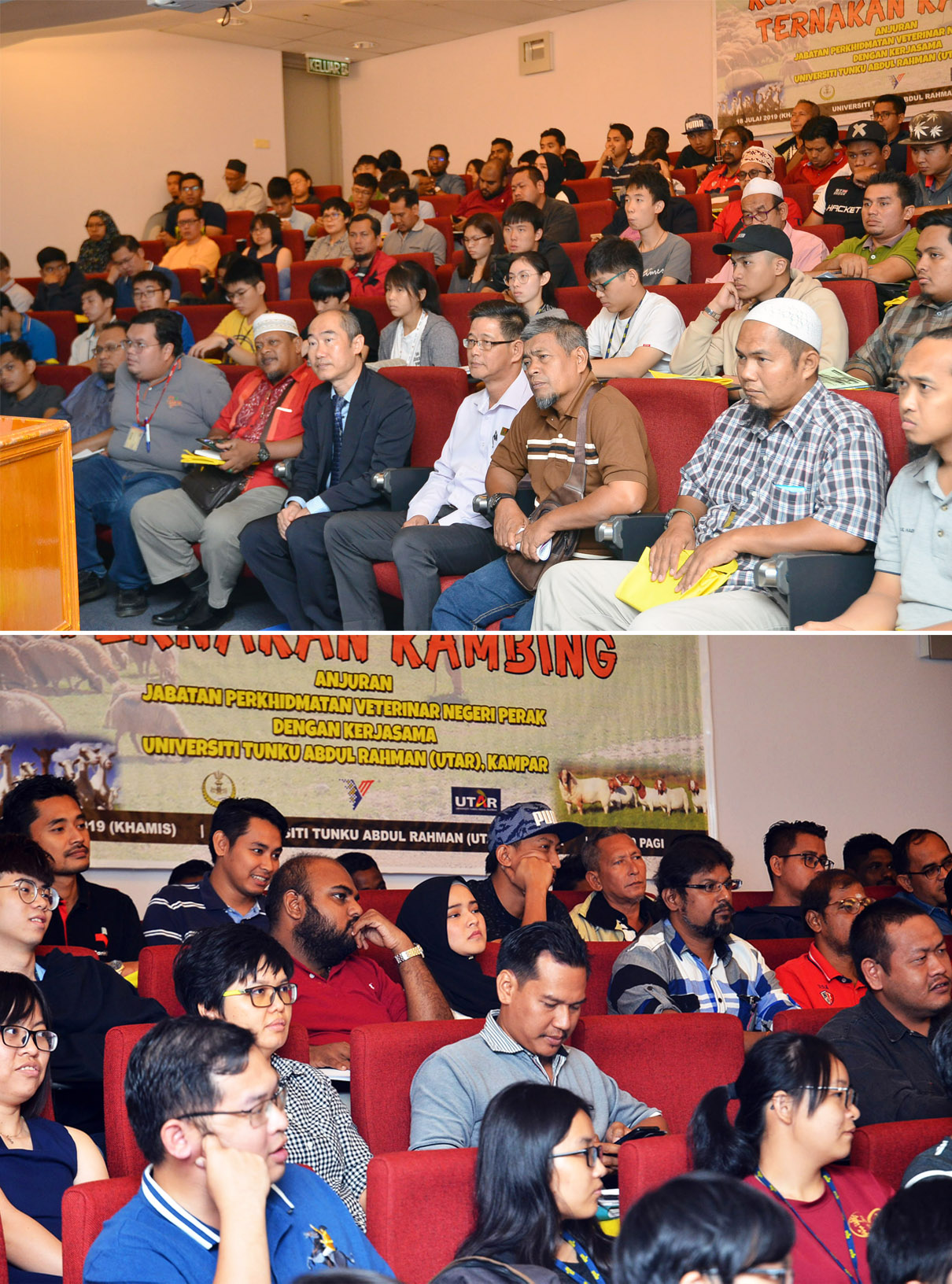
Participants listening attentively
© 2019 UNIVERSITI TUNKU ABDUL RAHMAN DU012(A).
Wholly owned by UTAR Education Foundation Co. No. 578227-M LEGAL STATEMENT TERM OF USAGE PRIVACY NOTICE